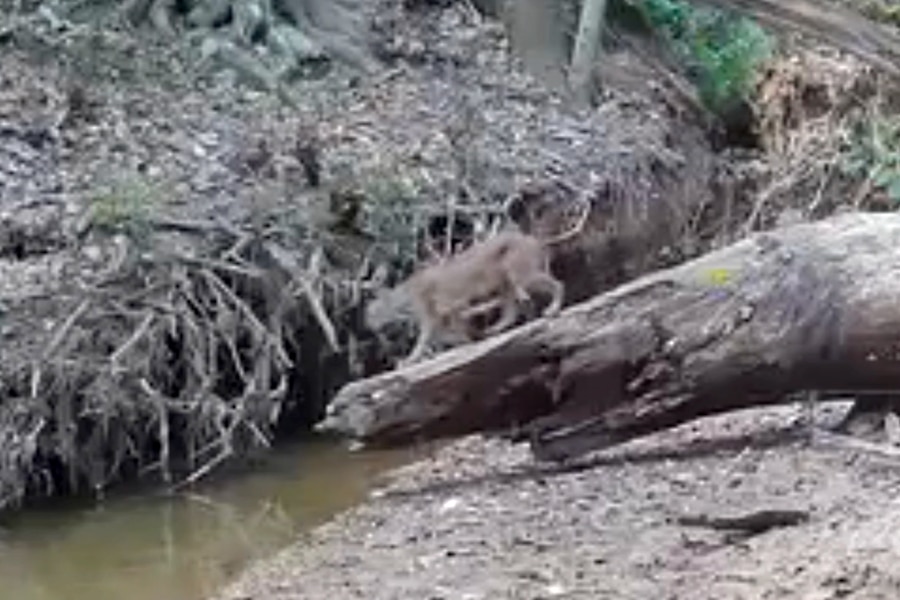A northern Harford County landowner checking his camera footage made an extraordinary discovery: a light-haired bobcat prancing around his property.
The bobcat population in Maryland declined in the late 1800s because of forest and habitat destruction but has since rebounded a bit. Some county residents swear they have been hearing the animals outside their homes for years.
But while there have been hundreds of reports of bobcat sightings around Harford County over the years, none have been confirmed, said John Garrison, the conservation director at the Susquehannock Wildlife Society, a nonprofit that works to protect the area’s wildlife and habitat. This camera footage from September is the first time the organization has been able to spot a bobcat for certain in the county.
Garrison said is a good sign for the health of the county’s environment.
“It’s a testament to the conservation of bobcats in the mid-Atlantic and the Northeast,” said Garrison. “There’s been a lot of conservation efforts underway to make sure their populations can thrive and that habitats are good enough to support them.”
Maryland’s Department of Natural Resources confirmed that this was the first verified sighting and added bobcats to the list of flora and fauna in the county, said Garrison. He added that bobcats are native to Maryland, but they mostly live in Garrett, Allegany, Washington and Frederick counties.
The wild cats are still considered uncommon in the state, according to the Maryland Department of Natural Resources.
Garrison said it is very rare to hear a bobcat vocalize and often times they make sounds that can be hard to differentiate from other nocturnal animals’ calls. The best way to verify whether or not you’ve seen a bobcat is through capturing them or locating their paw prints.
Bobcats are considered a medium-sized wild cat, with a “tawny color and … patterns of stripes and spots,” according to the state’s Department of Natural Resources. They also have a distinct “bobbed,” or short, tail.
While it was not immediately clear if the bobcat was part of a larger population that moved to Harford County, Garrison said there’s no reason to fear the predator. Bobcats often stay far away from humans and rarely attack farm animals, he said.

